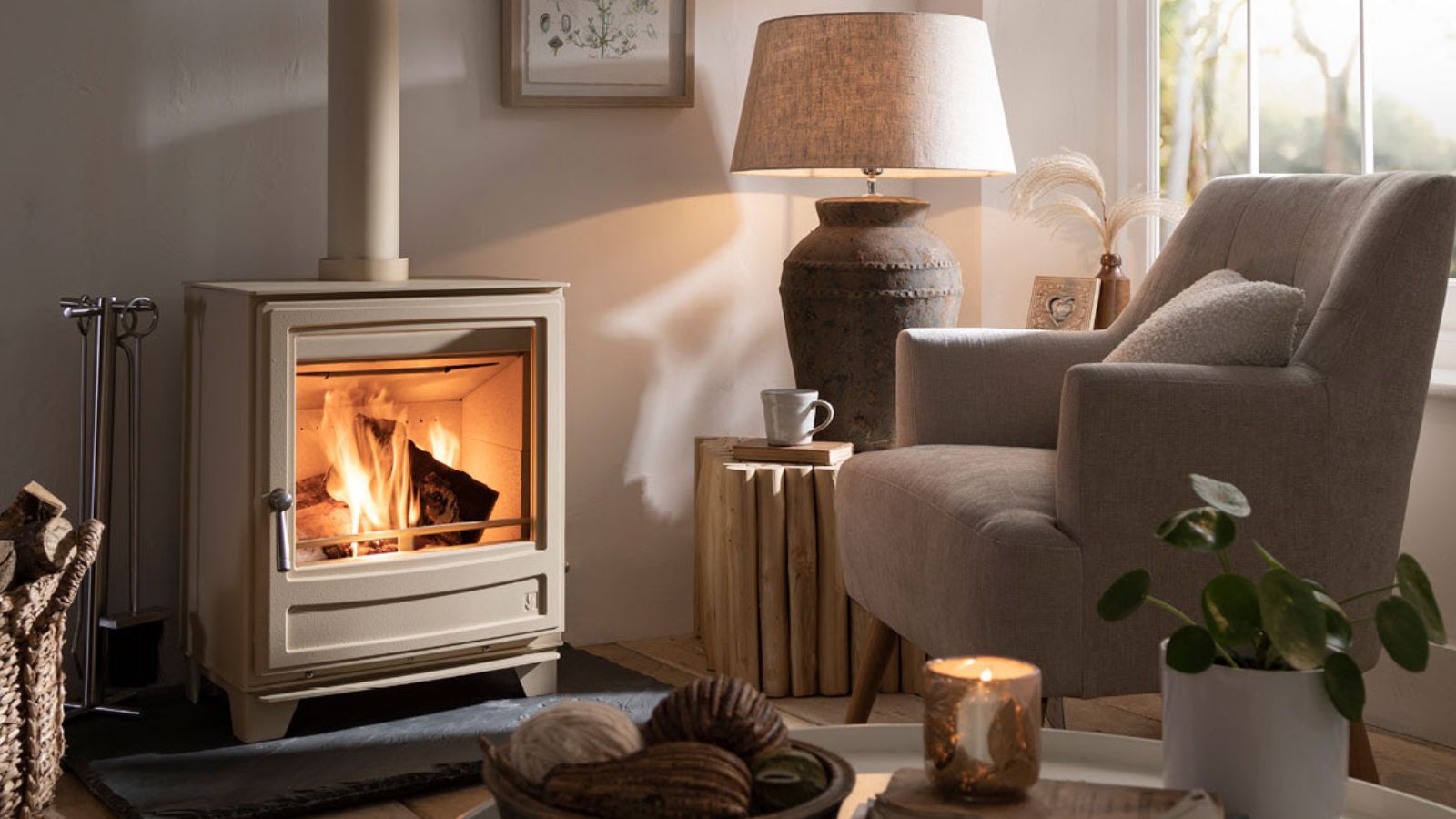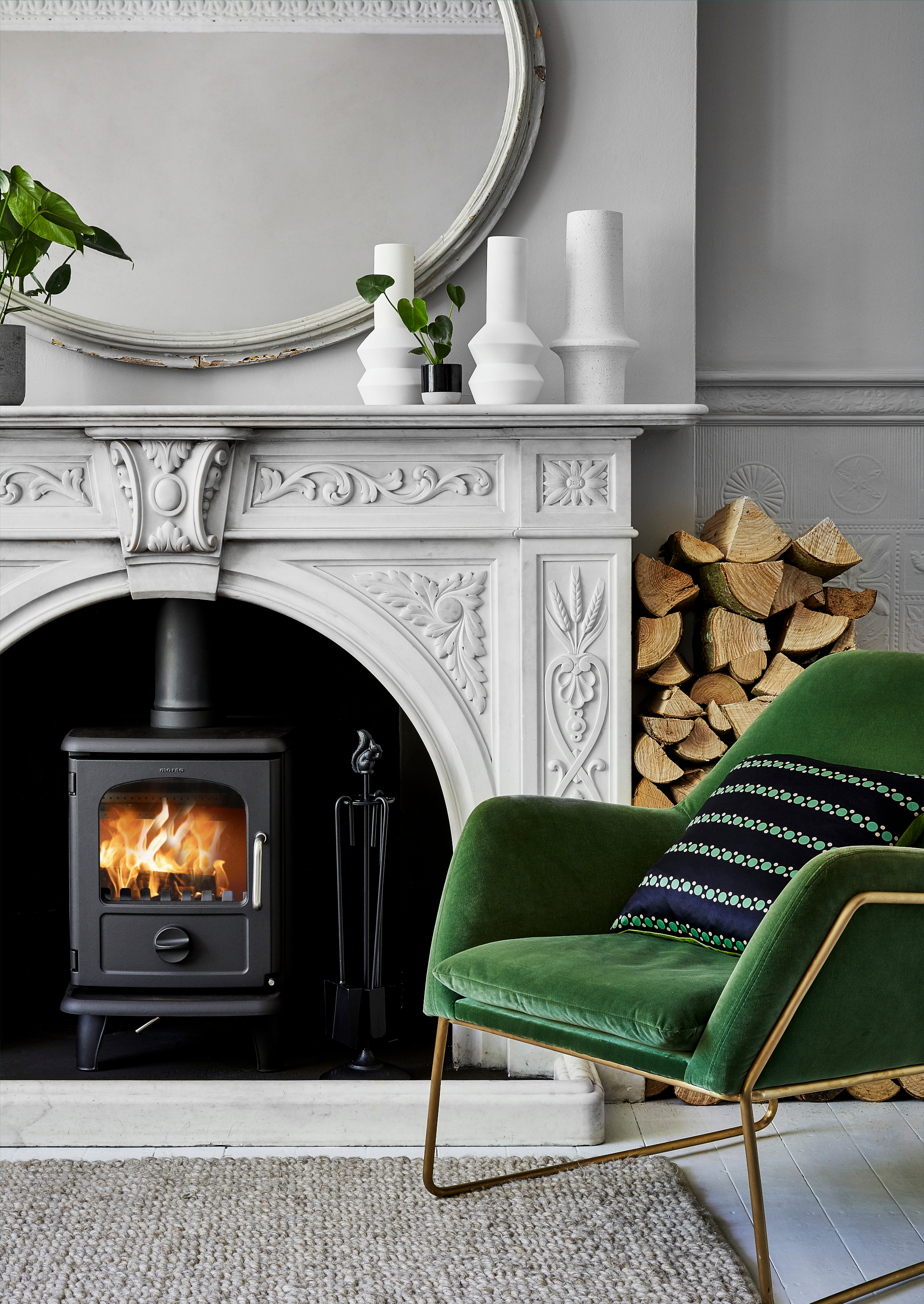Yes, this trick for removing burn marks from fireplace glass is unconventional – but my stove looks brand new now
All you need is water, a cloth, and one very surprising ingredient


I hate the way black burn marks make my glass fireplace door look, especially considering that one of my favorite things about my stove is being able to watch the flames crackle on a cold day. Trying to get rid of these burn marks has always been near impossible – until now, that is.
When scrolling through TikTok, I came across a tip for cleaning a fireplace door that uses only three things to easily remove stubborn stains. The surprising ingredient? Leftover ash from the fire itself!
I simply had to give it a try on my living room fireplace. Here is how I got on.
How to clean fireplace glass

I admit that using what I would consider dirt to clean dirt didn’t seem very logical, but it turns out the naturally abrasive quality of ash helps to scrub away the soot build-up without being harsh enough to scratch the glass door or weaken the protective coating.
What’s more, ash and water mixed together forms lye, a strong caustic alkaline used in making soaps, making it an effective cleaner.
You will need just three ingredients to remove burn marks:
- A soft microfiber cloth like these ones on Amazon
- Room temperature water
- A spoonful of ash and soot from my fireplace grate
- Rubber cleaning gloves from Amazon to protect my hands
- Disposable dust mask, like this one from Amazon(optional)
1. Dampen the cloth and dip in ash
Before doing this, I made sure my stove had cooled completely. While ash is non-toxic, lye can be corrosive and irritating when it comes into contact with bare skin, so the gloves were a must.
It is also advisable to wear a facemask, especially if you have asthma or another respiratory condition. You should always take precautions to prevent breathing in or otherwise ingesting any cleaning product or solution.
Then, I dampened the cloth under a tap of very lukewarm water, and after wringing out any excess, dipped it into the ash in the bottom of the fireplace grate that I left when clearing it out.
2. Apply the lye
I proceeded to rub the glass in small, circular motions using strong pressure to work the lye into the glass and lift the stains away. Unlike cleaning windows or cleaning a glass oven door, a little more force is required to help buff away the marks.
I found I needed to replenish the cloth with water and ash a few times too, so it may be worth keeping a bowl of water nearby to prevent making a few trips to the kitchen.
Many people in the comments of the original video also pointed out that you can use old newspaper that hasn't got a shiny patina, or even dampened kitchen towel for this too if you don't want to stain one of your household cleaning cloths, although I wasn't too precious about keeping mine pristine.
I found that this method took a little longer than expected to do with some elbow grease, but the glass front was completely clean in around half an hour – it may take you a little longer if you have a larger fireplaces or haven't cleaned the glass in a while. It was simple to do while I watched TV in the background too, making the process a little more fun.
The result astounded me. I went from skeptical that it would work to having a brand-new-looking stove in less than an hour.
Why does my fire glass go black?
Fire glass can turn black for a few reasons, but the most common is a build-up of soot formed when burning natural fuels such as wood or coal bricks when there is a lack of proper ventilation. An uneven fuel-to-air ratio in the burner caused by a lack of airflow, or an abundance of fuel burning pressed up against the glass, will ‘burn’ or scorch the glass leading to hard-to-remove black marks. Your fireplace may turn blacker quicker if you are burning unseasoned wood too.
Does vinegar clean fireplace glass?
Cleaning with vinegar – particularly distilled white vinegar – can be the perfect solution for removing dark marks from fireplace glass.
Combine distilled white vinegar with a little baking soda until it forms a thick paste before scrubbing it onto the glass with a soft brush (like an old toothbrush) to loosen and remove tough marks without scratching or weakening the glass.
Sign up to the Homes & Gardens newsletter
Design expertise in your inbox – from inspiring decorating ideas and beautiful celebrity homes to practical gardening advice and shopping round-ups.

Chiana has been at Homes & Gardens for two years and is our resident 'queen' of non-toxic living. She spends most of her time producing content for the Solved section of the website, helping readers get the most out of their homes through clever decluttering, cleaning, and tidying tips. She was named one of Fixr's top home improvement journalists in 2024.
-
 Ina Garten's storage pantry is an insightful window into all of the best cookware used by the chef – and it's easy to recreate on your kitchen shelves from $48
Ina Garten's storage pantry is an insightful window into all of the best cookware used by the chef – and it's easy to recreate on your kitchen shelves from $48The beautiful dishware in The Barefoot Contessa's Hamptons pantry showcases the tools she uses most often to cook – this is exactly how you replicate it
By Sophie Edwards Published
-
 Extend the lifespan of your appliance with 5 simple but crucial washing machine maintenance tips
Extend the lifespan of your appliance with 5 simple but crucial washing machine maintenance tipsFrom cleaning the filters to keeping the door open, experts reveal the washer tips they swear by
By Andy van Terheyden Published